Assessment of a Wind Turbine Blade Erosion Lifetime Prediction Model with Industrial Protection Materials and Testing Methods
Abstract
:1. Introduction
2. Erosion Lifetime Prediction Modelling Based on the Springer Model. A Review
3. Material Characterisation and Rain Erosion Testing
3.1. Material Base Properties Measurement
3.2. Rain Erosion Testing
4. Quantitative Analysis of Rain Erosion Lifetime Performance Prediction
4.1. Case 1. Derivation of the Erosion Strength from Base Material Properties and Performance Analysis Based on Springer Modelling
4.2. Case 2. Derivation of the Erosion Strength from VN Testing Data and Performance Analysis Based on Linear Regression
5. Conclusions
Author Contributions
Funding
Institutional Review Board Statement
Informed Consent Statement
Data Availability Statement
Conflicts of Interest
References
- Herring, R.; Dyer, K.; Martin, F.; Ward, C. The increasing importance of leading edge erosion and a review of existing protection solutions. Renew. Sustain. Energy Rev. 2019, 115, 109382. [Google Scholar] [CrossRef]
- DNVGL: RP-0171. Testing of Rotor Blade Erosion Protection Systems: Recommended Practice; DNV GL: Oslo, Norway, 2018; Available online: http://www.dnvgl.com (accessed on 9 July 2020).
- Springer, G.S. Erosion by Liquid Impact; John Wiley and Sons: New York, NY, USA, 1976. [Google Scholar]
- Domenech, L.; Renau, J.; Šakalytė, A.; Sánchez, F. Top coating anti-erosion performance analysis in wind turbine blades depending on relative acoustic impedance. Part 1: Modelling approach. Coatings 2020, 10, 685. [Google Scholar] [CrossRef]
- Domenech, L.; García-Peñas, V.; Šakalytė, A.; Francis, D.P.; Skoglund, E.; Sánchez, F. Top coating anti-erosion performance analysis in wind turbine blades depending on relative acoustic impedance. Part 2: Material characterization and rain erosion testing evaluation. Coatings 2020, 10, 709. [Google Scholar] [CrossRef]
- Ibrahim, M.E.; Medraj, M. Water Droplet Erosion of Wind Turbine Blades: Mechanics, Testing, Modeling and Future Perspectives. Materials 2019, 13, 157. [Google Scholar] [CrossRef] [Green Version]
- Law, H.; Koutsos, V. Leading edge erosion of wind turbines: Effect of solid airborne particles and rain on operational wind farms. Wind Energy 2020, 23, 1955–1965. [Google Scholar] [CrossRef]
- Eisenberg, D.; Laustsen, S.; Stege, J. Wind turbine blade coating leading edge rain erosion model: Development and validation. Wind Energy 2018, 21, 942–951. [Google Scholar] [CrossRef]
- Slot, H.; Gelinck, E.; Rentrop, C.; van der Heide, E. Leading edge erosion of coated wind turbine blades: Review of coating life models. Renew. Energy 2015, 80, 837–848. [Google Scholar] [CrossRef]
- Tobin, E.; Young, T.; Raps, D.; Rohr, O. Comparison of liquid impingement results from whirling arm and water-jet rain erosion test facilities. Wear 2011, 271, 2625–2631. [Google Scholar] [CrossRef]
- Adler, W.F. Waterdrop impact modeling. Wear 1995, 186–187, 341–351. [Google Scholar] [CrossRef]
- Gohardani, O. Impact of erosion testing aspects on current and future flight conditions. Prog. Aerosp. Sci. 2011, 47, 280–303. [Google Scholar] [CrossRef]
- Doagou-Rad, S.; Mishnaevsky, L.M., Jr.; Bech, J.I. Leading edge erosion of wind turbine blades: Multiaxial critical plane fatigue model of coating degradation under random liquid impacts. Wind Energy 2020, 23, 1752–1766. [Google Scholar] [CrossRef]
- Fang, J.; Owens, R.G.; Tacher, L.; Parriaux, A. A numerical study of the SPH method for simulating transient viscoelastic free surface flows. J. Non-Newton. Fluid Mech. 2006, 139, 68–84. [Google Scholar] [CrossRef] [Green Version]
- Verma, A.S.; Castro, S.G.; Jiang, Z.; Teuwen, J.J. Numerical investigation of rain droplet impact on offshore wind turbine blades under different rainfall conditions: A parametric study. Compos. Struct. 2020, 241, 112096. [Google Scholar] [CrossRef]
- Yonemoto, Y.; Kunugi, T. Universality of droplet impingement: Low-to-high viscosities and surface tensions. Coatings 2018, 8, 409. [Google Scholar] [CrossRef] [Green Version]
- ASTM D882-18 Standard Test Method for Tensile Properties of Thin Plasic Sheeting; ASTM: West Conshohocken, PA, USA, 2018; Volume 08.01.
- ISO 2811-1: Paints and Varnishes—Determination of Density—Part 1: Pycnometer Method; ISO: Geneva, Switzerland, 2016; Volume 87.040.
- Sarva, S.S.; Deschanel, S.; Boyce, M.C.; Chen, W. Stress–strain behavior of a polyurea and a polyurethane from low to high strain rates. Polymer 2007, 48, 2208–2213. [Google Scholar] [CrossRef]
- Fan, J.; Weerheijm, J.; Sluys, B. High-strain-rate tensile mechanical response of a polyurethane elastomeric material. Polymer 2015, 65, 72–80. [Google Scholar] [CrossRef]
- Ronold, K.O.; Echtermeyer, A.T. Estimation of fatigue curves for design of composite laminates. Compos. Part A Appl. Sci. Manuf. 1996, 27, 485–491. [Google Scholar] [CrossRef]
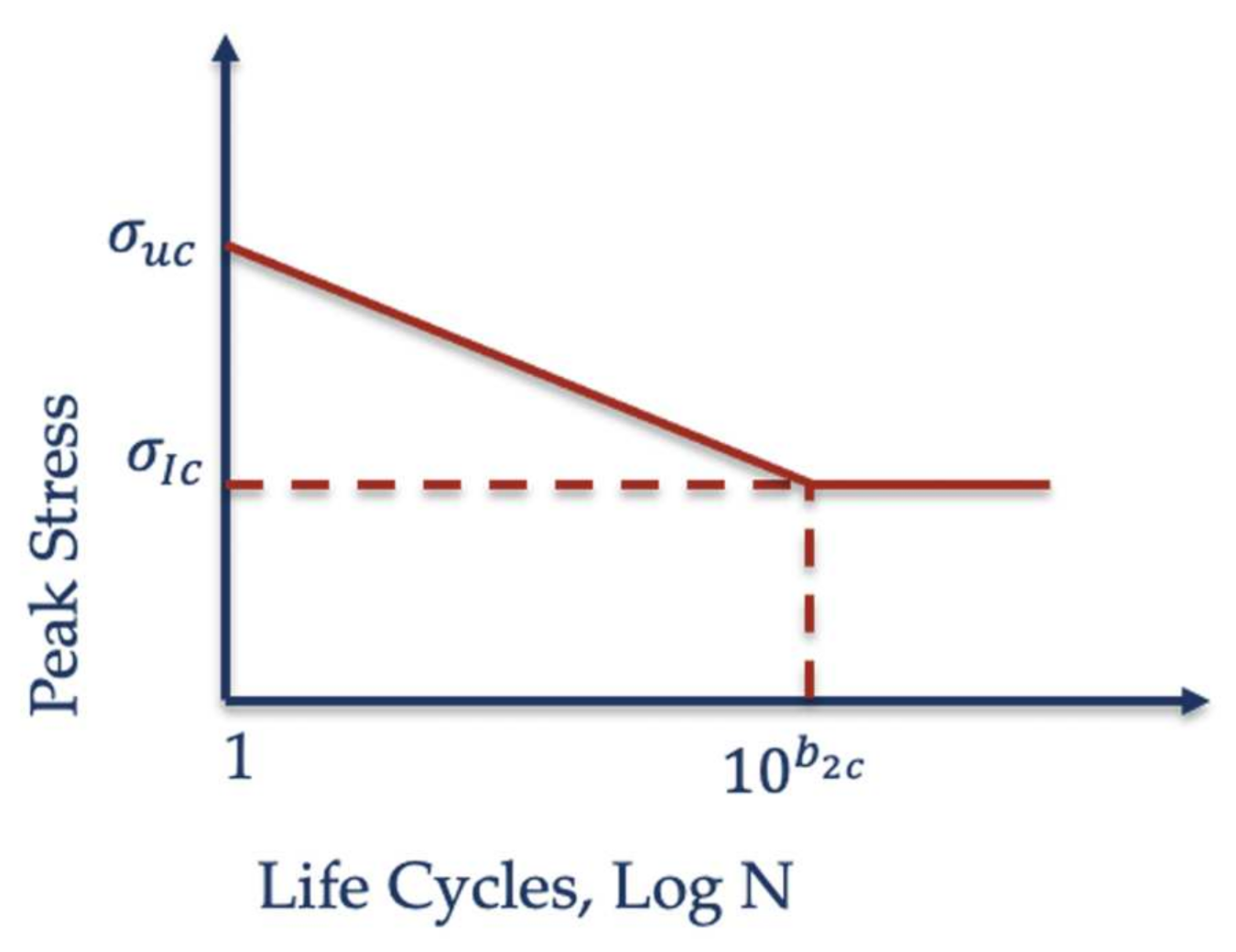
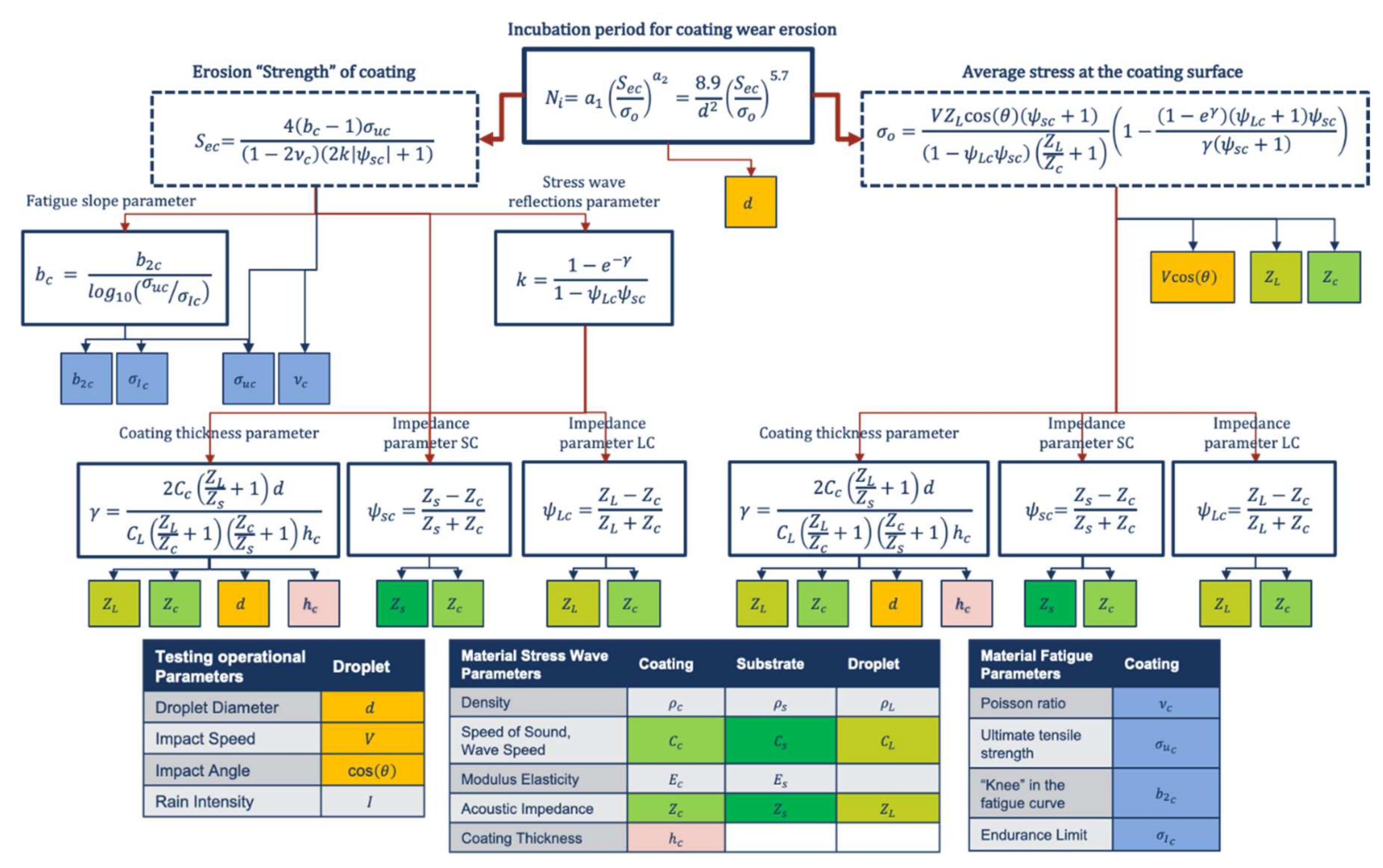
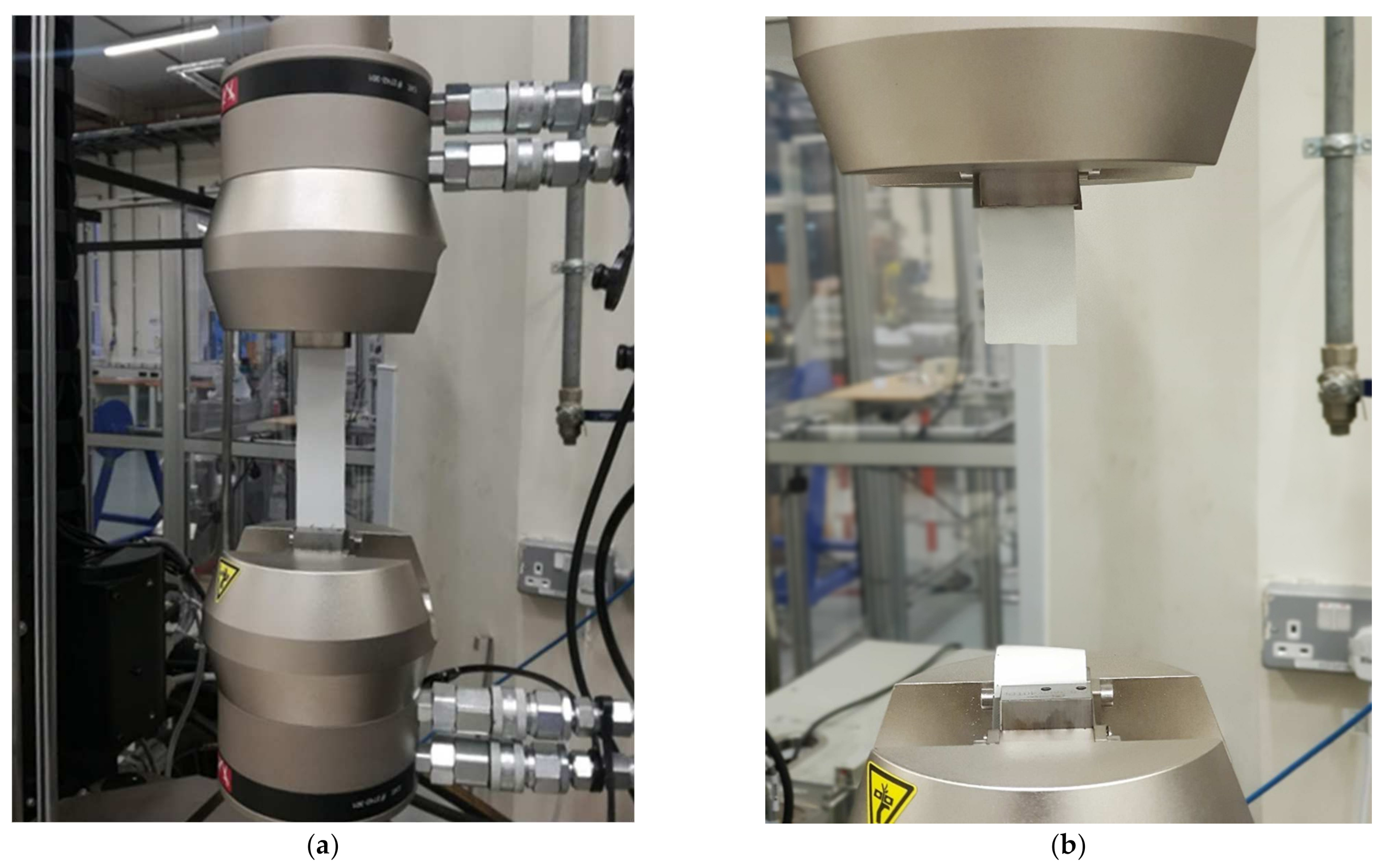
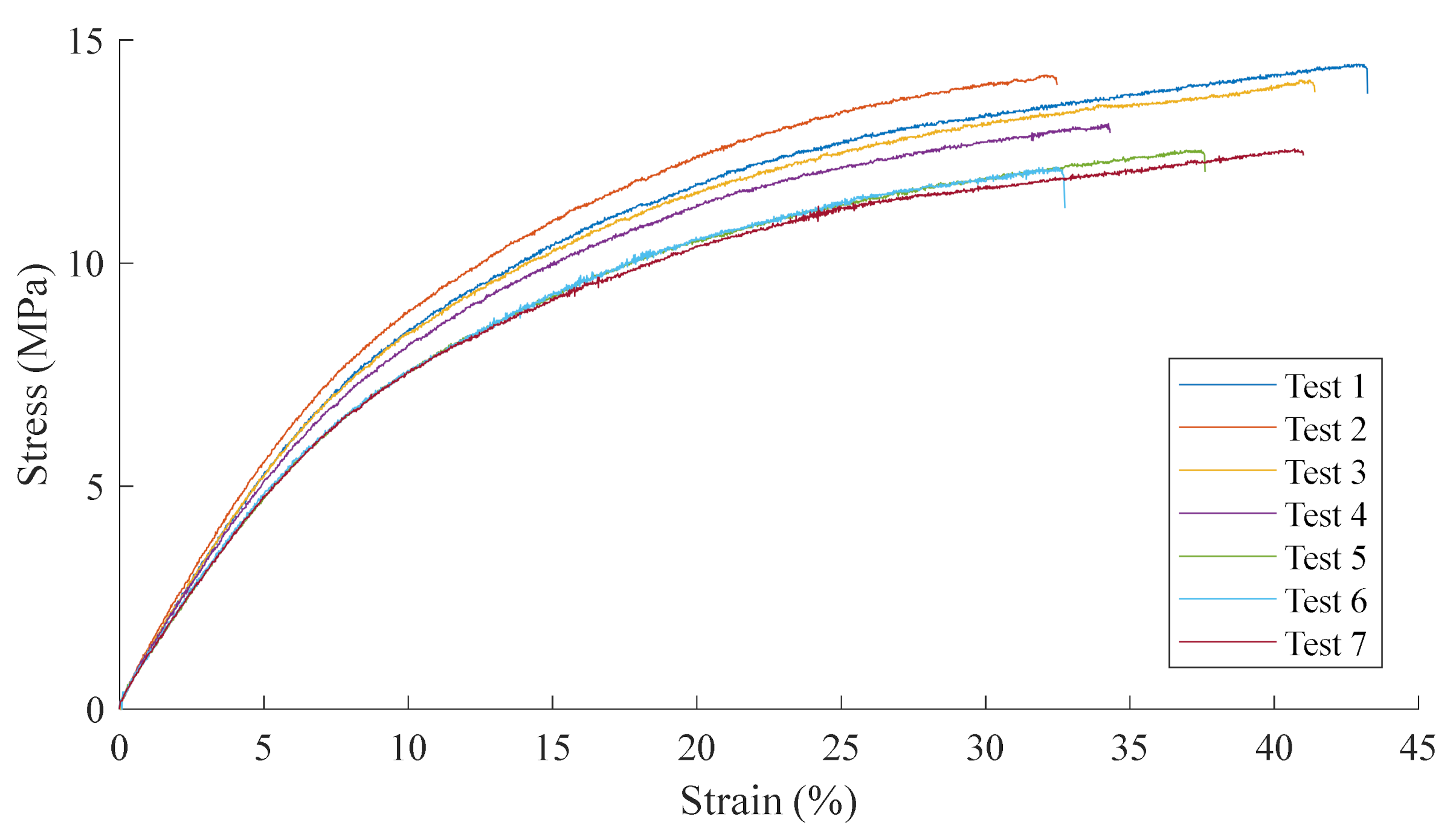
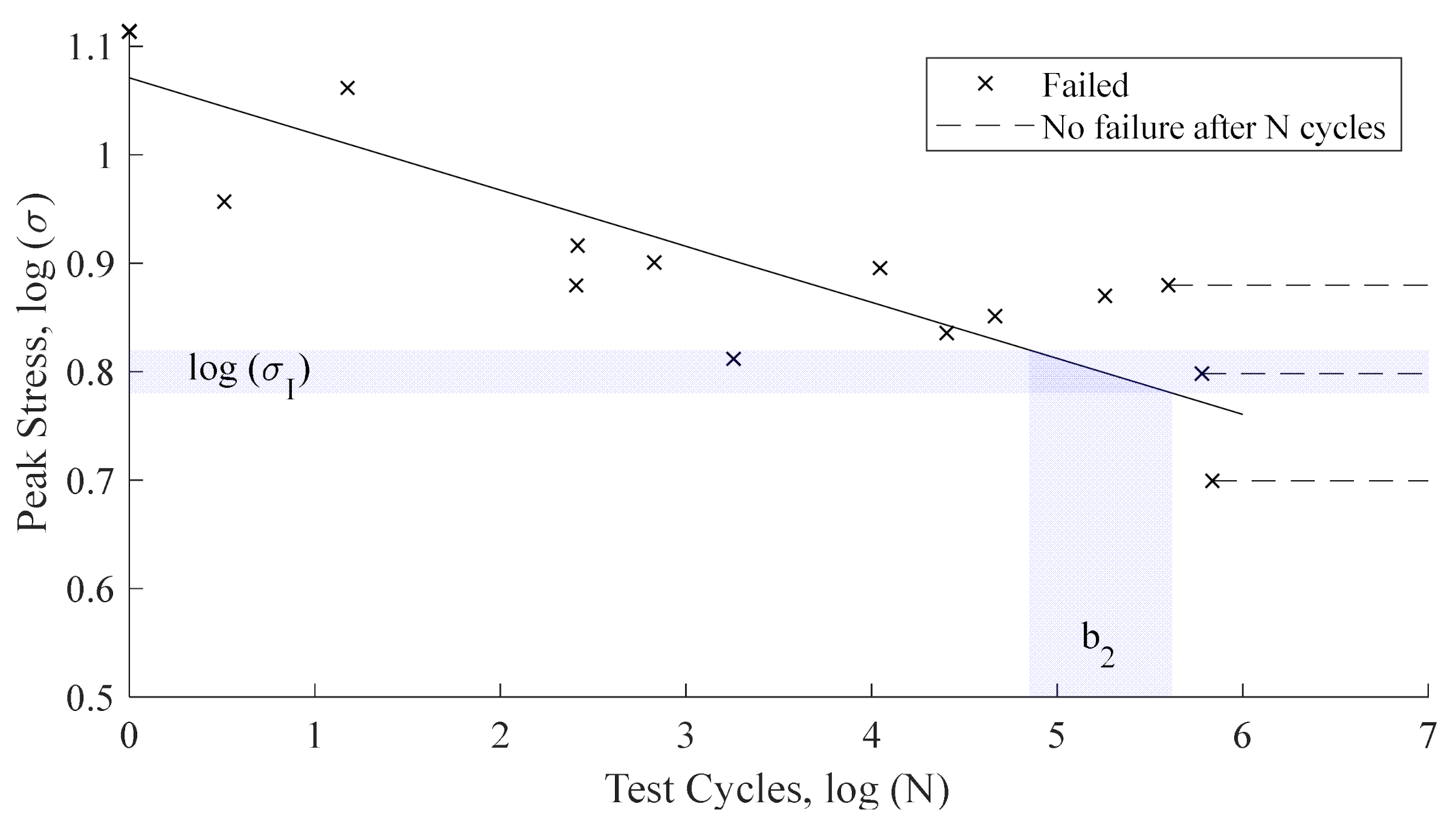


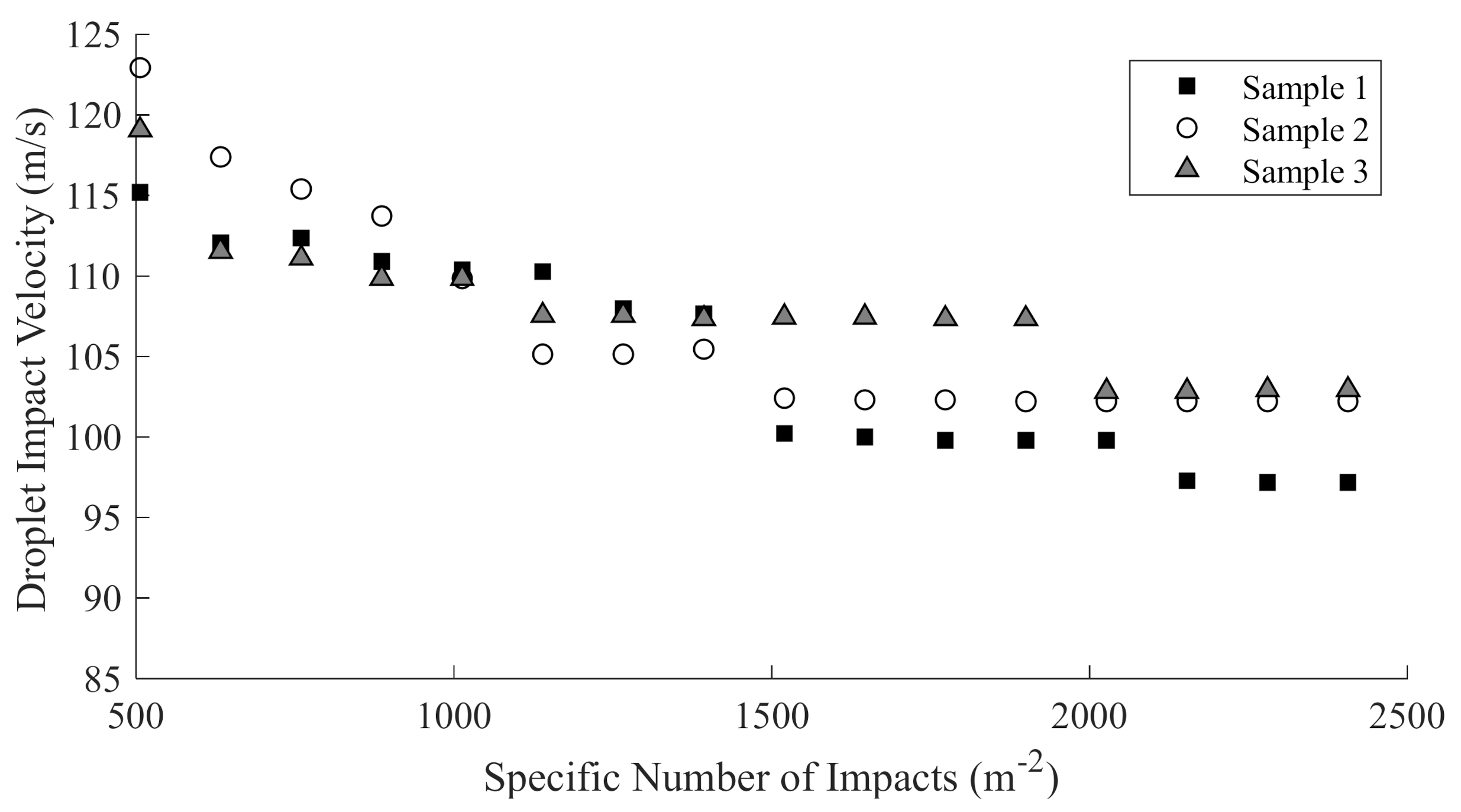


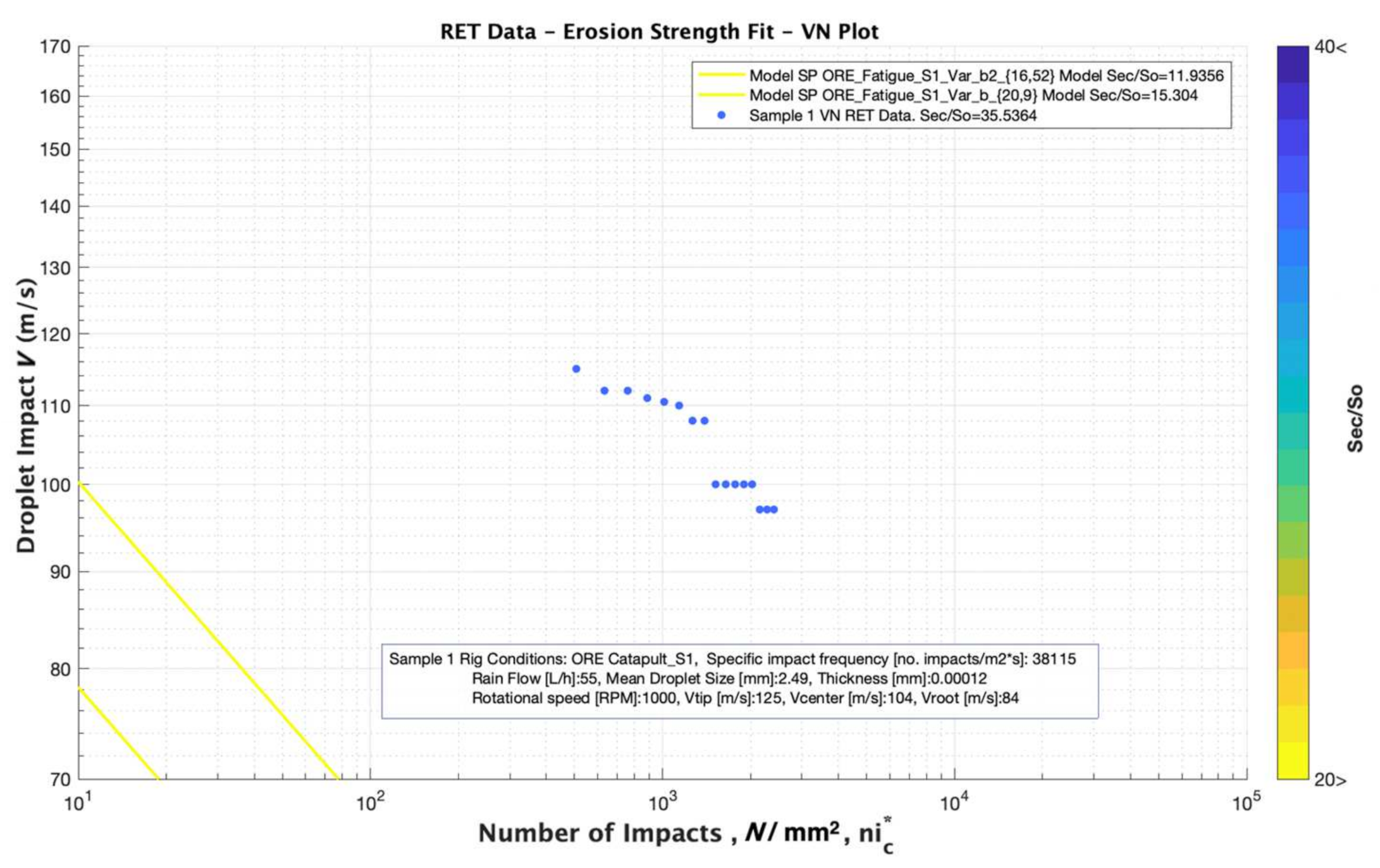


| Coating | Composite Substrate | |||
|---|---|---|---|---|
| Average | CoV (%) | Average | CoV (%) | |
| Density, (kg/m3) | 1690 | - | 1930 | 0.47 |
| Speed of sound, (m/s) | 1730 | - | 2390 | 3.72 |
| Poisson’s ratio, | 0.295 | 2.03 | - | - |
| Ultimate tensile strength, (MPa) | 13.0 | 6.16 | - | - |
| Endurance Limit, (MPa) | 6.316 | 2.30 | - | - |
| Fatigue “knee”, | 16.52 | 6.95 | - | - |
Publisher’s Note: MDPI stays neutral with regard to jurisdictional claims in published maps and institutional affiliations. |
© 2021 by the authors. Licensee MDPI, Basel, Switzerland. This article is an open access article distributed under the terms and conditions of the Creative Commons Attribution (CC BY) license (https://creativecommons.org/licenses/by/4.0/).
Share and Cite
Herring, R.; Domenech, L.; Renau, J.; Šakalytė, A.; Ward, C.; Dyer, K.; Sánchez, F. Assessment of a Wind Turbine Blade Erosion Lifetime Prediction Model with Industrial Protection Materials and Testing Methods. Coatings 2021, 11, 767. https://doi.org/10.3390/coatings11070767
Herring R, Domenech L, Renau J, Šakalytė A, Ward C, Dyer K, Sánchez F. Assessment of a Wind Turbine Blade Erosion Lifetime Prediction Model with Industrial Protection Materials and Testing Methods. Coatings. 2021; 11(7):767. https://doi.org/10.3390/coatings11070767
Chicago/Turabian StyleHerring, Robbie, Luis Domenech, Jordi Renau, Asta Šakalytė, Carwyn Ward, Kirsten Dyer, and Fernando Sánchez. 2021. "Assessment of a Wind Turbine Blade Erosion Lifetime Prediction Model with Industrial Protection Materials and Testing Methods" Coatings 11, no. 7: 767. https://doi.org/10.3390/coatings11070767
APA StyleHerring, R., Domenech, L., Renau, J., Šakalytė, A., Ward, C., Dyer, K., & Sánchez, F. (2021). Assessment of a Wind Turbine Blade Erosion Lifetime Prediction Model with Industrial Protection Materials and Testing Methods. Coatings, 11(7), 767. https://doi.org/10.3390/coatings11070767








